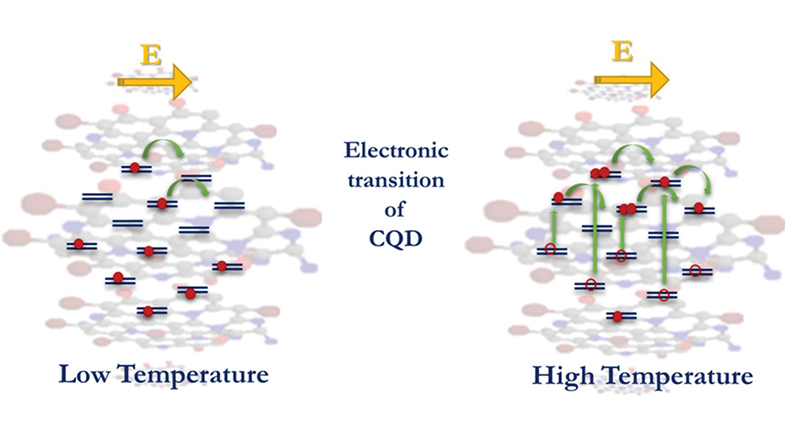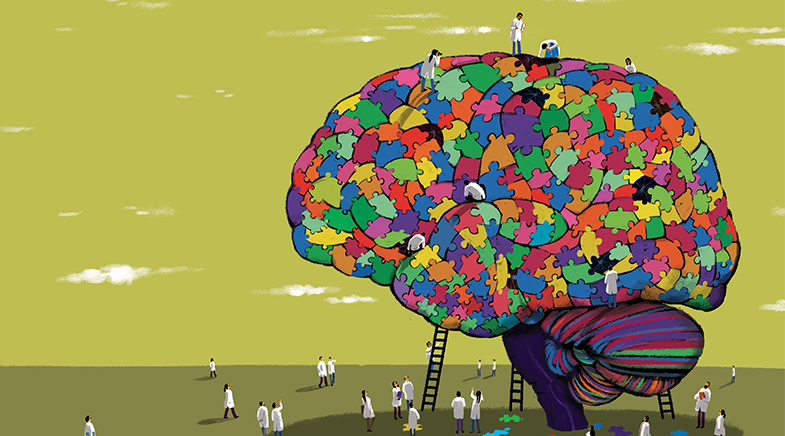Quantum buzz
-
- from Shaastra :: vol 02 issue 05 :: Sep - Oct 2023

Along with AI, quantum computing is touted as one of the two defining technologies of the 21st century.
More than two years ago, when we launched Shaastra as an electronic publication, we were high on ambition but low on human resources. The idea of Shaastra, a broad-based science magazine that covers everything from particle physics to start-ups, was new in India. No one had worked on a magazine that tried to combine breadth and depth in this manner. It was possible to assemble a team only slowly.
Our in-house capabilities grew quickly. For the sake of continuity, however, we stuck to the philosophy of the original design of the magazine. After 28 months of existence, we decided to overhaul the magazine's design. Our aim has been to provide more white space and relief while reading, and introduce more variety and meaning to the visuals. The result, we hope, is a design that is more contemporary, appealing as much to the intellect as to the senses.
The revolution that quantum computers can bring about in our lives may be nothing short of miraculous.
The Cover Story in this issue is on quantum computing. Along with artificial intelligence (AI), it is touted as one of the two defining technologies of the 21st century. As with AI, it is a work in progress, with the first big impact not expected to be felt for another decade. And, as with AI, the potential of the technology is visible now. Early versions of quantum computers have been built. Even these versions, although error-prone or 'noisy', have been put to good use by some scientists.
The revolution that quantum computers can bring about in our lives may be nothing short of miraculous. It can let scientists solve intractable problems like carbon capture, cancer drug discovery, climate modelling, and so on. Solving these big problems is necessary for the health of humanity and the planet. Fixing climate change through innovation requires both AI and quantum computing in large measure. On the other hand, both of them can provide enormous business opportunities and, therefore, grow the global economy.
Competence in quantum computing and AI is necessary for any country with a strategic interest in technology. Such competence cannot be created easily and requires sustained investments over long periods. Indian scientists had started research in quantum computing over a decade ago, but it really picked up only six years ago after breakthroughs from Chinese scientists. Now, there is a national programme with the involvement of multiple institutions.
Shubashree Desikan's stories – The quantum edge of technology and For the long haul – go deep into the potential of quantum computing and describe some of the research now happening in India. They offer a glimpse of the activity in the country, in the order in which key quantum technologies are likely to hit the commercial marketplace: sensors, batteries, communications, and then computing. Although research in these areas is in its early stages, these stories provide insights into the challenges of developing such exquisitely tuned devices. The Big Data pages provide a snapshot of quantum technologies and give a sense of where countries stand at the moment, and what to expect in the near future.
Other stories also report developments that are critical to the future. Gauri Kamath's story on continuous manufacturing, from A game-changing pharma innovation, captures a trend that is about to create ripples through the world of generic drugs, and thus Indian industry. It is expected to make manufacturing facilities smaller, cheaper and safer. Like all game-changing technologies, continuous manufacturing requires expertise and research.
Elsewhere, there are stories on epigenetics, plasma-activated water, digitising smell, green hydrogen, and the promise of perovskites for solar cells. The science of epigenetics has been growing in strength during the last decade, and Manupriya's story, Outside the DNA, shows how plants provide clues to the importance of epigenetics for humans, and why it is important for our health and for the health of the next generation.
In the print edition of the magazine, we have also introduced a new section called In Short, which is a summary of some important science and technology news during the past month. Some of them may be familiar, some not. We hope to introduce more new sections that provide variety to the magazine, appealing to a wide section of our readers. We hope you enjoy the new look of Shaastra.
Have a
story idea?
Tell us.
Do you have a recent research paper or an idea for a science/technology-themed article that you'd like to tell us about?
GET IN TOUCH














